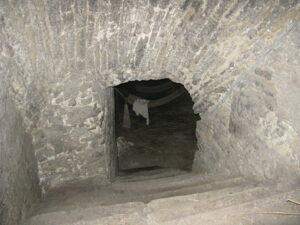
Scotland’s most famous fortress and part of the dramatic skyline of Scotland, is Edinburgh Castle. It has sat overlooking the city since the 13th century and is the country’s most popular attraction, which is easy to see why. The history of this place is so immense that it can be quite overwhelming, especially when you learn that it is also supposed to be one of the most haunted places in all of Scotland. So apart from viewing it from the streets, let’s take a look at what is inside Edinburgh Castle.
A trip inside this spectacular place, a place for royals, a military residence, a fortress and now, the city’s number one tourist attraction will not disappoint.
Discover What Is Inside Edinburgh Castle Apart from the Esplanade
We start at the Esplanade, a long and flat area leading up to the castle. Built in 1753, this was the stage for Edinburgh’s military. It is now used as the annual outdoor showground for The Royal Edinburgh Military Tattoo, as well as many other artists that have performed here.
From here you’ll reach the moat and drawbridge, two pieces of architecture designed specifically to keep people out. This is really part of the castle’s history, as it has been home to many a siege during its long life. There is also a big portcullis gate, strong and heavy and again designed to keep people out.
The Esplanade area is very well known and has been visited by millions of visitors over the years with all the attractions it offers. But there is much more to see with a visit to the castle apart from the Esplanade.
The Castle Gatehouse
This fortified structure was built over the entrance to the castle, a place for people to keep watch for anyone approaching the main entrance. Three stories high, it’s quite impressive and was historically very heavily guarded.
Edinburgh Castle was a place everyone wanted for their own. The first floor contained the guard rooms. Where the guards would sit and watch while on duty. When not on duty they would head upstairs to the second floor which housed them, as well as the machinery for operating the portcullis gate.
The top floor of the gatehouse stored all their weapons and, scarily enough, murder holes. These were holes placed directly over the entrance to the castle, where things such as boiling hot sand or oil was quickly dropped on any enemies trying to gain access.
David’s Tower
Named after David II (who built it), this tower once stood three stories high and served as the main point of defence. However, it was brought down during the Lang Siege, and as of today, only the ground floor remains.
To read more about and see an image of what David’s tower looked like see our post titled the History of Edinburgh Castle.
Also, here you’ll find the Fore Well, the main water supply into the castle from as early as the 14th century. 34m deep it provided the residents with a fresh supply of drinking water, as well as water to wash and cook with. It was also destroyed during the Lang Siege – cutting off water to the people inside and forcing them to surrender after three days.
Edinburgh Castle Dungeon
The dungeons are perhaps the part of the castle with the most violent and sometimes harrowing history. Prisoners kept there would die of poor living conditions, malnourishment, disease and even torture.
This is where the castle’s haunted legacy really comes into its own. Today you can tour the castle’s dungeon. The tours there have been designed to recreate some of the trials that people prisoned here would have had to endure.
There’s an element of the dramatic to entice people in, but it’s important to remember as you walk around these dark, damp rooms that people were forced to live here, for real.
The only real way to get to see what Is inside Edinburgh Castle is to visit. It’s a must see if you’re anywhere near the area. But for now, we hope this gives you a little more insight into what it’s like to walk these historic paths, that so many have walked before. Tickets are available at the Edinburgh Castle site.
